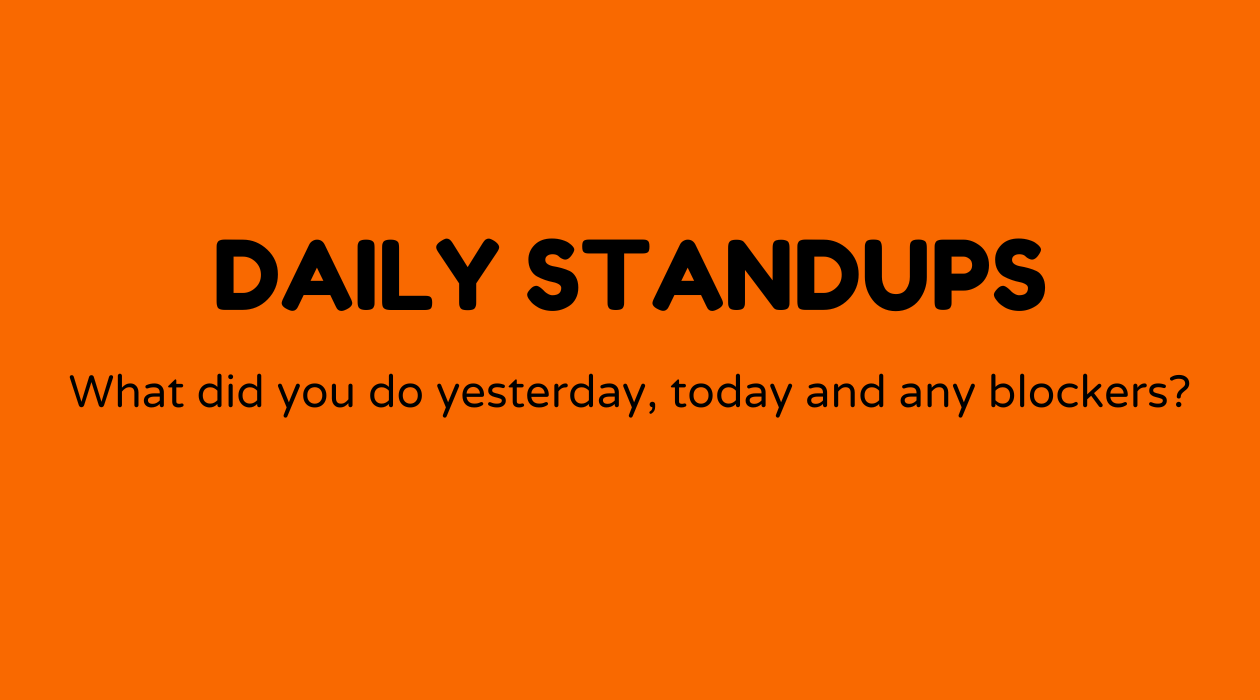Daily standup meetings

Overview of Daily Standup Meetings
Daily standup meetings are brief gatherings designed for teams—especially in agile environments—to swiftly share updates and align on progress. Usually lasting around 15 minutes, these meetings help keep team members informed about each other’s activities and any challenges they encounter. Think of it as a quick status overview to ensure everyone is aligned.
The purpose is not just communication; it’s about making sure everyone understands the current situation and is able to provide assistance if necessary. You might find these meetings occurring near a whiteboard or a display of project management software. While they are most prevalent in sectors like software development, any team that benefits from frequent updates can adopt them.
Why Daily Standup Meetings Are Important
Daily standup meetings play a vital role in team cohesion and efficiency. They keep everyone aligned, enhance transparency, and help identify any blockers or issues early. This practice encourages open communication and fosters a culture of accountability and collaboration.
Why do they matter? These meetings help reduce the risk of misunderstandings or duplicated efforts. They serve as a check-in point for the team’s progress while promoting swift problem-solving through direct communication. If one person runs into a challenge, another may have the solution. This collaborative environment aids in promoting innovation and effectiveness.
Understanding a Daily Standup Meeting
So, what is a daily standup meeting? It’s a short, daily session where team members share:
- What they accomplished yesterday.
- What they plan to do today.
- Any obstacles they face.
These gatherings are referred to as "standups" because the format encourages participants to stand, which helps keep the meetings concise and focused. The objective is not to resolve in-depth issues but to inform and adjust plans for the day as needed. It also offers leaders an opportunity to monitor progress and allows the team to balance communication about their tasks.
How to Conduct a Daily Standup Meeting
Running effective daily standup meetings involves several essential steps:
-
Establish a Regular Schedule: Hold the meetings at the same time and place daily. This routine builds structure.
-
Keep It Brief and Focused: Limit the meeting to 15 minutes. Only cover necessary updates, keeping discussions concise.
-
Adhere to the Three-Question Format: Focus discussions on yesterday’s achievements, today’s plans, and any encountered obstacles to maintain brevity.
-
Encourage Participation: Everyone should share, but if further discussion is needed, take it outside the meeting.
-
Use Visual Aids: Utilize Kanban boards or project management software (like Jira or Trello) if possible, to visually track progress and energize the standup.
By adhering to these practices, teams can conduct effective daily standups that enhance productivity without infringing on work time.
Sample Agenda of a Daily Standup Meeting
Here’s a sample agenda for flow:
-
Welcome and Goals (2-3 minutes)
-
Team Updates (10 minutes)
-
Each team member addresses the three key questions:
- What did I accomplish yesterday?
- What will I tackle today?
- What obstacles am I facing?
-
-
Resolution of Blockers (2-3 minutes)
- Rapidly identify any issues requiring further discussion afterward.
Examples of Daily Standup Meetings
Daily standup meetings can vary in style based on the team and its objectives:
-
Remote Team Standups: Teams working remotely might utilize video services like Zoom or Microsoft Teams to conduct their daily meetings. This can include visuals of a Kanban board to track discussions.
-
In-Person Standups: Typically held in a break room or common office area where team members can gather quickly.
-
Hybrid Meetings: Some organizations may adopt a hybrid model, bringing together team members in person while including remote participants via video call.
FAQs
What is the primary goal of daily standup meetings?
The main goal is to keep team members aligned, ensuring awareness of each other's progress and any obstacles that need addressing.
How long should a daily standup meeting last?
The ideal meeting length should be no more than 15 minutes to avoid overshadowing productive work.
Is it necessary for everyone to attend the daily standup meeting?
Yes, all active team members should participate to promote effective communication and transparency.
What tool can we use to enhance our daily standup meetings?
Platforms like Trello, Jira, or other project management tools with visual boards can improve communication and tracking.
How can we make our standup meetings more effective?
Maintain a regular schedule, keep a focused agenda, and use visual aids for quick information sharing.
Is it okay to skip a daily standup meeting?
Generally, these should not be missed as they are essential for alignment. However, exceptions can be made if the team is not working on shared tasks or if there's a public holiday.



